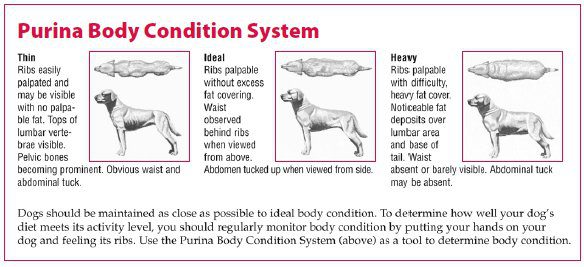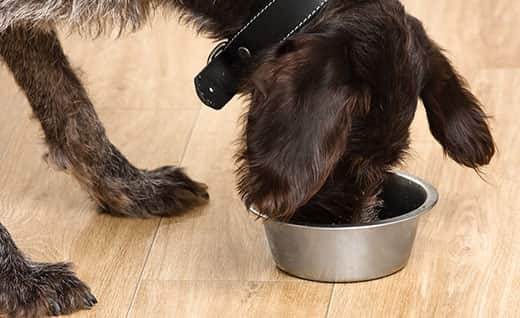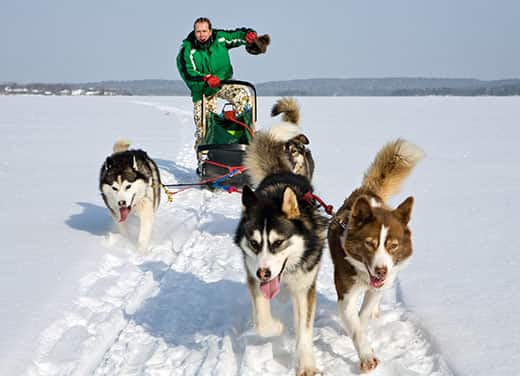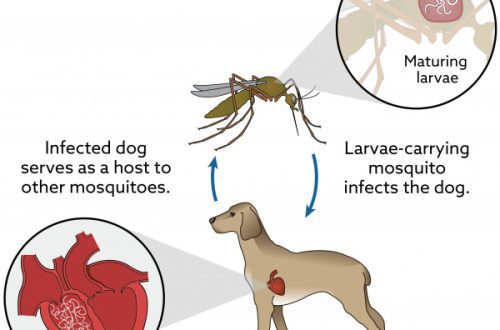
High Protein Dog Food: How Much Protein Does Your Dog Need?
It seems that high protein dog food can do nothing but benefit. After all, dogs eat mostly meat… Don’t they? Yes, this is often talked about, but if you know dogs, you know that these animals, left to their own devices, will eat whatever is easiest to get, be it meat, vegetables, potato chips, or the contents of your cat’s litter box. Watching your dog’s uncontrolled eating habits isn’t the best way to figure out what’s good for her. Read on to find out what protein your dog needs and how much.
Contents
Carnivores or omnivores
 It is often assumed that dogs are exceptional meat eaters who require a high protein diet. This idea arose in part because dogs are associated with wolves, which are actually carnivorous predators, and also because dogs belong to the carnivorous order, which includes wolves and other carnivorous animal species. But despite its name, the order also includes herbivores and omnivores, including bears, raccoons and giant pandas, according to the Cummings School of Veterinary Medicine at Tufts University. In fact, over the millennia, dogs have evolved significantly and acquired several important differences from wolves. One of them, according to a study published in the journal Nature, is that the evolution of the dog genome allows them not only to digest vegetable starches, but also to successfully grow and develop on foods containing a wide range of diverse ingredients, including fruits, vegetables, herbs. , cereals, meat, poultry, fish and many other products, which makes them truly omnivores.
It is often assumed that dogs are exceptional meat eaters who require a high protein diet. This idea arose in part because dogs are associated with wolves, which are actually carnivorous predators, and also because dogs belong to the carnivorous order, which includes wolves and other carnivorous animal species. But despite its name, the order also includes herbivores and omnivores, including bears, raccoons and giant pandas, according to the Cummings School of Veterinary Medicine at Tufts University. In fact, over the millennia, dogs have evolved significantly and acquired several important differences from wolves. One of them, according to a study published in the journal Nature, is that the evolution of the dog genome allows them not only to digest vegetable starches, but also to successfully grow and develop on foods containing a wide range of diverse ingredients, including fruits, vegetables, herbs. , cereals, meat, poultry, fish and many other products, which makes them truly omnivores.
How much protein does your dog need?
 Dogs are not carnivores, but they need the essential amino acids found in protein to grow properly. However, some veterinarians still do not recommend feeding high protein foods to dogs with kidney disease or older dogs. If in doubt, it’s best to consult your veterinarian to make sure your dog’s diet is correct. Accordingly, instead of monitoring the amount of protein in your dog’s diet, you should monitor its quality.
Dogs are not carnivores, but they need the essential amino acids found in protein to grow properly. However, some veterinarians still do not recommend feeding high protein foods to dogs with kidney disease or older dogs. If in doubt, it’s best to consult your veterinarian to make sure your dog’s diet is correct. Accordingly, instead of monitoring the amount of protein in your dog’s diet, you should monitor its quality.
Dogs can only consume a certain amount of protein, which is immediately digested and absorbed, providing repair and maintenance of muscles and other tissues. Any excess the body seeks to get rid of, which means that it is broken down and burned for energy or stored as fat. In either case, the kidneys remove the by-products of protein breakdown that are excreted in the urine. If you’ve ever noticed yellow spots on your lawn after your dog goes to the toilet, it could very well be caused by too much protein. Also, if your dog is gaining weight, you should also check the amount of protein in his food.
Too little protein in your puppy’s diet is also a problem. Protein is needed by the dog for energy production and building muscles, bones and joints. As a general recommendation, the American Association of Feed Inspection Officials suggests that a minimum of 18% crude protein (protein) on a dry matter basis (that is, the amount of residue we get if we isolate from feed all the moisture). Growing puppies and nursing mothers should include at least 22,5% protein on a dry matter basis. Again, ask your veterinarian how much protein is recommended for your dog based on their age and activity level.
High protein dog food
The offer of high protein dog food is usually based on the perception of dogs as domesticated wolves. But dogs are not wolves. They are able not only to digest plant foods, but also to extract amino acids from plant proteins with the help of their digestive system. According to the Petfood Industry, it’s not the amount of protein in a dog’s diet that matters, but the digestibility and bioavailability of amino acids. Often, meat-based, high-protein dog foods include protein sources that are neither digestible nor bioavailable to your dog. The unused protein is fermented and sent to the stool, making your dog’s solid waste smell more pungent, according to the Petfood Industry.
High quality protein for dogs
According to the Petfood Industry, when it comes to digestibility and bioavailability, you need to understand that you need a mixture of animal and plant proteins that provides the maximum amount of essential amino acids. Beef, lamb and poultry alone do not provide an optimal ratio of bioavailable amino acids. This is why high-quality commercial dog foods usually include additional protein sources such as fish and fishmeal, eggs, animal by-products, and vegetable proteins such as wheat or corn gluten. This variety of protein sources ensures that the dog’s body can utilize the essential amino acids and receive a more complete diet.
High protein dog food and food allergies
Grains and gluten are often cited as the cause of food allergies and skin problems in dogs. However, according to Tufts University, food allergies are rare in dogs. Also, if they do occur, the meat is usually to blame. Tufts University lists beef proteins as the main cause of food allergies in dogs. So it’s important to understand that while high-protein grain-free dog foods are sometimes advertised as a remedy for food allergies, they can actually make things worse if you don’t know the exact causes of your dog’s allergies.
Complete and balanced nutrition
Of course, protein is just one component of pet food that provides complete nutrition for your dog. While some proponents of high-protein foods claim that the key is getting your dog to eat meat, the healthiest dog foods contain a balanced mix of digestible, bioavailable protein sources and healthy fiber sources, including grains, fruits and vegetables, healthy fats, vitamins, and minerals. Among other things, such components provide the necessary energy value, promote digestion, strengthen and protect joints, facilitate the absorption of vitamins and minerals, and improve the health of the skin, hair and teeth, according to ASPCA. Although protein is an essential part of your dog’s diet, protein alone will not provide all the essentials for the health of the animal as a whole.
When shopping for dog food, it’s important to go beyond the promotional claims on the packaging. It is necessary to carefully check its composition and nutritional value. High-quality protein sources should be on your list, but high-quality sources of grains or vegetables and fats should also be included. Vitamins and minerals should complete the list. This way you know you’re feeding your puppy a high-quality food that doesn’t just contain individual ingredients, but provides complete nutrition that will help him live a long and healthy life..





